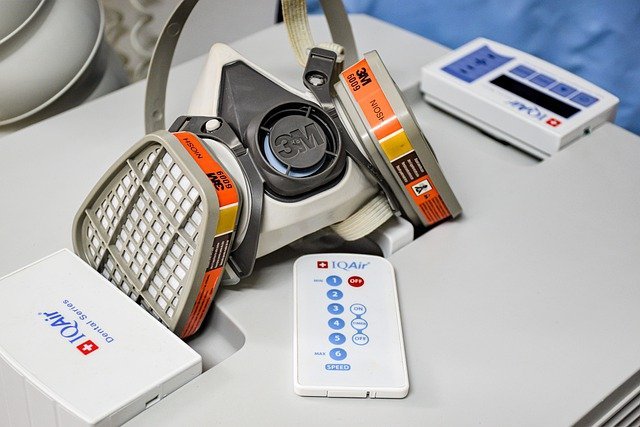HEPA filters are very effective, certified to capture 99.97 percent of particles that are precisely 0.3 micron in diameter. (Particles that size are perfectly suited to maneuver through the filter’s fibers, while larger and smaller particles, because of the various ways they move in the air, crash into the structure.)
The novel coronavirus itself is 0.125 microns, but Marr says the droplets it travels in—when people cough, talk, or breathe—initially are larger, around 1 micron. That’s a size easily captured by HEPA filters.
James Dickerson, CR’s chief science officer echoes the consensus that air purifiers could help in some situations, but with a caveat: “HEPA filters are very efficient at catching coronavirus-size particles, but the particles must first physically travel to the filter,” he says.
That means an air purifier has to be capable of consistently drawing in enough air to reduce the amount of virus particles in the air. The faster an air purifier can cycle air through the filter, the better its chances of catching virus particles. You can see how fast an air purifier cleans the surrounding air by looking for its CADR (clean air delivery rate) number on the packaging.
CADR reflects, in cubic feet per minute, the volume of clean air that an air purifier produces at its highest speed setting. At lower speeds, the rate a machine is able to clean air decreases. The packaging should have three CADR ratings, one for smoke, dust, and pollen, which represent small, medium, or large particles, respectively. For example, a purifier with a CADR of 250 for smoke reduces smoke particle levels to the same concentration that would be achieved by adding 250 cubic feet of clean air each minute. (Smoke particles are similar in size to the smallest virus droplets while larger droplets are closer to the pollen size range.)
Based on CR’s lab tests of air purifiers, we recommend looking for a model with a CADR over 240, which can perform roughly five air exchanges per hour in its suggested room size. In our tests, these air purifiers perform well for quickly removing particles of all sizes from the air. All the models we highlight below have a CADR over 240.
One practical matter to consider, however, is that you may not want to run an air purifier on its highest speed setting (in order to achieve the highest CADR). Air purifiers can be quite loud, especially at higher speeds, and that can disturb the sick person’s sleep. Here at CR we measure air purifiers’ noise levels in decibels and rate that trait. The models we highlight perform well removing particles even at …….
